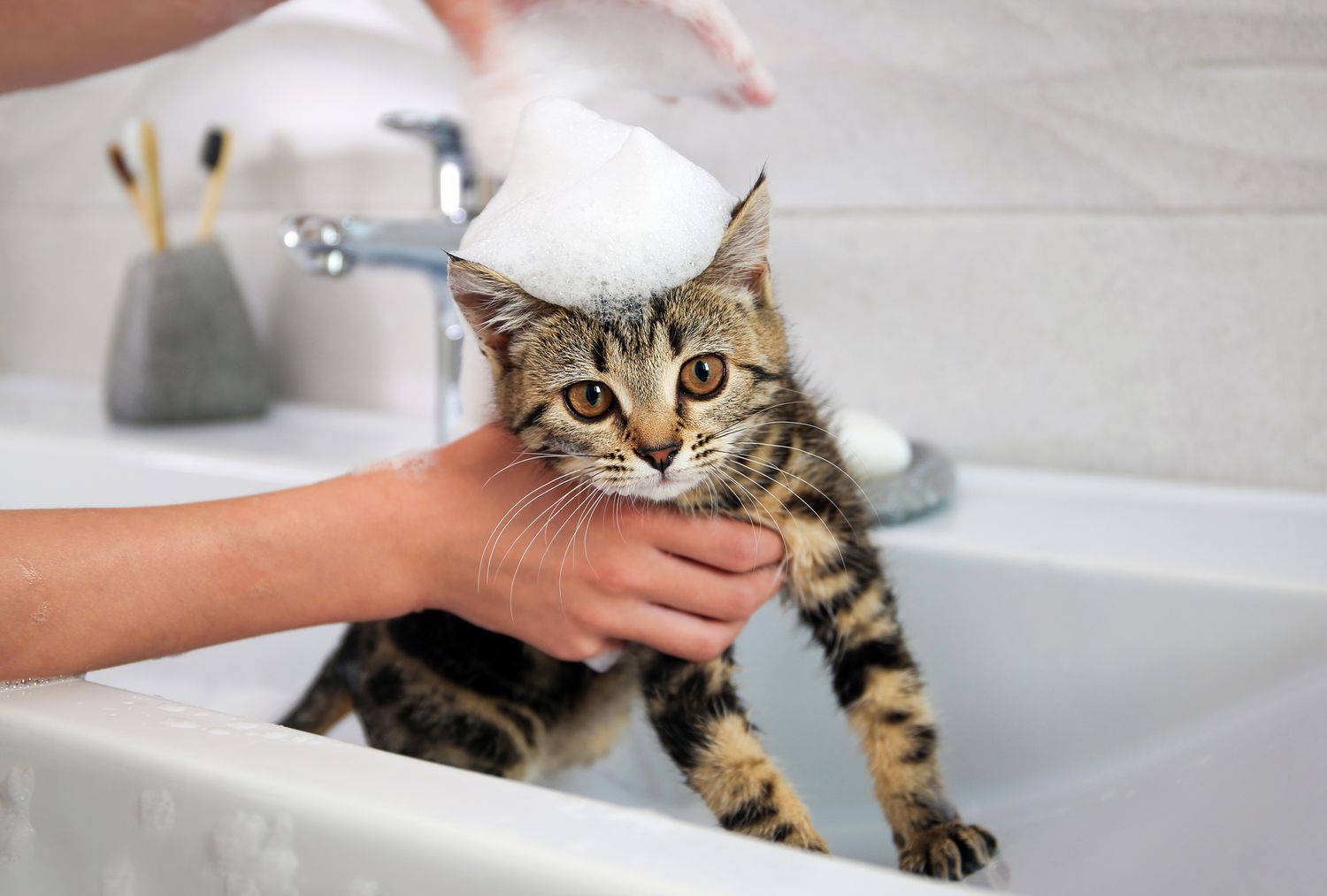Is bath time an utter cat-astrophe for you and your feline friend? If the mere thought of getting your cat to somehow enjoy bath time seems wildly impossible, we’ve got some good news: there’s such a thing as dry shampoo for cats! For a stress-free way (for you and your cat) to make sure your curious kitty stays fresh and clean, dry shampoo can be a great option.
Read on for tips, tricks, and veterinarian advice on using dry shampoo for cats.
Is Dry Shampoo Safe for Cats?
While dry shampoo might seem like the best solution if your cat hates water issue, you might be wondering if it’s safe. Sara Ochoa, DVM at Senior Tail Waggers and Whitehouse Veterinary Hospital in Whitehouse, Texas, says it is.
“Dry shampoo is great for cats,” Ochoa says. “Most cats do not like to get wet. Using dry or waterless shampoo is great at helping clean your cat without having to give them a bath.”
However, if your cat has a history of skin problems, dry shampoo may not be right for them.
“If a cat is overly greasy, matted, or dirty, they likely have a medical condition that needs to be addressed,” Jamie Whittenburg, DVM, chief of staff at Kingsgate Animal Hospital, says.
If you recognize these signs in your own kitty, check with your veterinarian to determine whether your cat has a skin condition.
How to Choose a Dry Shampoo for Cats
It’s likely your cat will try to lick off the dry shampoo you’ve just applied when self-grooming. For this reason, keep these tips in mind when picking out dry shampoo for your cat:
- Only use a dry shampoo that is specifically formulated for cats.
- Keep an eye on ingredients, especially if your cat has allergies.
- Ask your veterinarian for any recommendations.
How to Use Dry Shampoo for Cats
We humans know when our hair needs a little de-greasing. But it’s a bit trickier with cats. So, how do you use dry shampoo on cats? And how often should you use it?
“It is best to spray a little dry shampoo on a towel and rub it on your cat. I would do this only about once a week,” Ochoa says. “I would not try to soak your cat with dry shampoo.”
Making sure the dry shampoo is evenly distributed throughout your cat’s fur will yield the best results. It’s a good idea to give your cat’s fur a good brush after applying dry shampoo.
When to Opt for a Bath
Cats are very hygienic, but there are times when self-grooming and dry shampoo won’t do the trick.
“If your cat is very dirty, they will need a bath,” Ochoa says. “Dry shampoo is really only good for spot cleaning or making your cat’s fur look nice and clean. It is not meant to fully replace a bath if your cat was covered with mud.”
